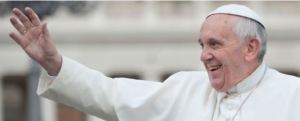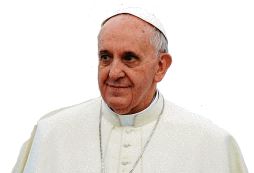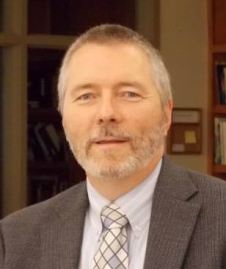 In 1965 the Fathers of Second Vatican Council complained about Catholics, “who imagine they can plunge themselves into earthly affairs in such a way as to imply that these are altogether divorced from the religious life.” They remarked that “this split between the faith which many profess and their daily lives deserves to be counted among the more serious errors of our age.” (Gaudium et Spes 43). Clearly these words are still very true today.
In 1965 the Fathers of Second Vatican Council complained about Catholics, “who imagine they can plunge themselves into earthly affairs in such a way as to imply that these are altogether divorced from the religious life.” They remarked that “this split between the faith which many profess and their daily lives deserves to be counted among the more serious errors of our age.” (Gaudium et Spes 43). Clearly these words are still very true today.
The Council Fathers produced two Constitutions on the Church. They followed a distinction borrowed from Trinitarian theology. The actions of the Church were described in terms of the interior works or the nature of the Church versus the Church’s exterior works or mission in the world.
The Dogmatic Constitution on the Church (Lumen Gentium) was intended to describe the nature of the Church itself, while a new schema was drafted to describe the Church in relation to the world. This new schema was eventually named Gaudium et Spes (The Pastoral Constitution on the Church in the Modern World).
In order to understand this outward directed mission, the Fathers highlighted the deepest understanding of what it means to be human. Each of us desires true and eternal happiness, or the integral fulfillment of the human condition. While the human condition offers many false substitutes, Christ is the ultimate foundation of our happiness (GS 10). The Council sought to solve fundamental human questions in the light of Christ “in order to shed light on the mystery of man and to cooperate in finding the solution to the outstanding problems of our time” (GS 10).
The fundamental truth is that “only in the mystery of the incarnate Word does the mystery of man take on light” (GS 22). The Fathers note that, “the root reason for human dignity lies in man's call to communion with God.” and that “…many of our contemporaries have never recognized this intimate and vital link with God, or have explicitly rejected it. Thus atheism must be accounted among the most serious problems of this age, and is deserving of closer examination.” The problem of systematic unbelief has not lessened in our time.
One highly significant facet of the mission of the Church in the world is the role of the lay faithful who are called to carry out “all their earthly activities . . . humane, domestic, professional, social and technical enterprises by gathering them into one vital synthesis with religious values” (GS 43). The lay faithful are called to be Christ in the midst of the world, in their daily life and professions. The General Directory of Catechesis notes;
The formation of lay catechists cannot ignore the specific character of the laity in the Church, and cannot be regarded as merely a synthesis of the mission received by priests and religious. Rather, "their apostolic training acquires a special character precisely from the secular nature of the lay state and from its particular type of spirituality" (GDC 237).
The relationship between Christ and culture has generally followed three patterns. One pattern is to attempt to remove oneself from the world, to live in a kind of a monastery in the desert or on a mountain. While such a calling has definite merit, especially for prayer, it is not the vision of the council for the lay person. A second model involves an uncritical assimilation to culture either by abandoning faith or by compartmentalizing or privatizing it so that it has no relevance to daily life. This view was condemned as serious error by the Council Fathers (GS 43). The final proposal is to allow Christ to transform culture through the daily lives of the faithful. This view requires us to be “in the midst of the world” but to fuse our life to our faith in a vital synthesis which transforms culture and bears witness to Christ.
I am reminded of a story told to me by a priest who had lived for a number of years in Europe. He knew Catholic women of deep faith in the city of Milan, Italy who had spent her life working as a designer in the fashion industry. One day while she was visit a fellow fashion designer she noticed that his newest line of apparel where created out of nearly transparent fabric with no attempt in the design at layering or some other method of making the outfit be less revealing. This concerned her deeply because this had potential to influence the whole fashion industry and thus impact the culture of Europe. I was told she looked at him and placed her hand under the fabric and holding it up asked him, “Would you dress you wife in this?” He thought for second and then replied, “No, I wouldn’t.” After she left his studio he apparently got on the phone and reordered his fabric in light of her comments. The presence of this Catholic fashion designer in the midst of a highly secular profession allowed Christ to be present and to transform this small part of culture. The council envisioned the transformation of all human culture as the lay faithful bear witness in every honest and upright vocation.
Norman Tanner, observes that there was a definite shift in emphasis as the Council began "proposing itself and the Catholic Church as moral points of reference for contemporary society" This was a deliberate attempt to seriously respond to Pope John XXIII's desire that the Council be pastoral in character. The schema was initially presented to the council by Cardinal Cento and Bishop Guano on behalf of the mixed commission that prepared it. Cardinal Cento proposed that the Council should conduct a dialogue with the people of our time. Bishop Gauno noted that "the Church had the right and duty to respond to the needs and aspirations of the world." He also observed that the council should be "a sign and vehicle of this dialogue between the Church and mankind." Cardinal Angelo Scola observes that "the category of dialogue as explored by the Magisterium of Paul VI in the Encyclical Escclesium suam provided the keystone for the development of this different way of looking at reality" He notes further that "it was in the nature of a pastoral Constitution to remain open to later developments."
There are two difficulties which arise from the idea of promoting a dialogue between the Church and the world. The first involves the doctrinal complexity of the relationship between the Church and the world. What does 'world' mean? What is meant by 'Church'? Secondly how does one find the balance between the unchanging principles of the faith and the contingencies of the present historical reality?
Cardinal Scola highlights two fundamental principles which relate to both the content and the method of Gaudium et spes. First, the teaching of this Constitution is based on a Christocentric anthropology, or an understanding of the human person which is centered on Christ. Secondly it is founded on a pastoral dimension which is attentive to the "signs of the times" and seeking the best way to present Christ to the human family.
Clear examples of a Christocentric anthropology is seen in a great number of passages from Gaudium et spes such as GS 10, 22, 32, 38-39, 40-41, and 45.
Cardinal Scola notes that the nexus between dialogue and Christocentric anthropology is seen most explicitly in GS 10;
The Church also maintains that beneath all changes there are many realities which do not change and which have their ultimate foundation in Christ, Who is the same yesterday and today, yes and forever (Cf. Heb 13:8). Hence under the light of Christ, the image of the unseen God, the firstborn of every creature, (Cf. Col 1:15) the council wishes to speak to all men in order to shed light on the mystery of man and to cooperate in finding the solution to the outstanding problems of our time. (Gaudium et spes 10).
Although the council provides many sections of Gaudium et spes which clearly offer features of an objective Christocentric anthropology they are fragmentary and seen "in embryo." Cardinal Scola's point mentioned above may be revisited; he notes "it was in the nature of a pastoral Constitution to remain open to later developments." Commenting on the reception of the Constitution after the council he notes that there is still an imperative need for "an organic reconsideration of the subject." The work of the Council that began in embryo needs to be continued to be developed by the Church and fully worked out as an objective Christocentric anthropology of the human person.
The second important dimension Cardinal Scola mentions is the pastoral dimension. This theme is expressed in terms of dialogue and resonates with themes of aggioramento and of the signs of the times. In his Encyclical Escclesium suam Pope Paul VI calls theme of aggioramento the guiding principle of the Council.
Pope Paul VI notes;
We cannot forget Pope John XXIII's word aggiornamento which We have adopted as expressing the aim and object of Our own pontificate. Besides ratifying it and confirming it as the guiding principle of the Ecumenical Council, We want to bring it to the notice of the whole Church. It should prove a stimulus to the Church to increase its ever growing vitality and its ability to take stock of itself and give careful consideration to the signs of the times, always and everywhere "proving all things and holding fast that which is good" (Cf. 1 Thes 5. 21.) with the enthusiasm of youth.
Cardinal Scola highlights three problems which arise from the above two themes.
1. The need to find a language adequate to express the dialogical (pastoral) dimension of the Council.
2. The problem of the pastoral nature of doctrine (particularly Magisterial pronouncements).
3. The question of the relationship between Christ as absolute Truth and the need for the "respect of the insuperable freedom of each person."










